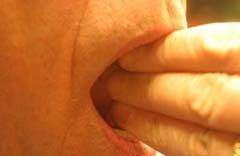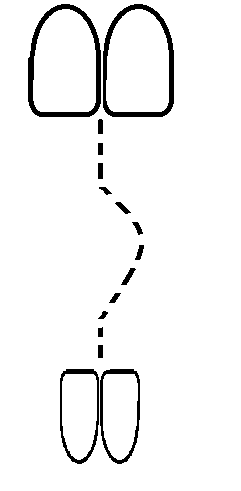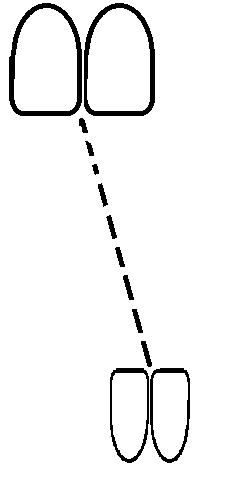What is TMJ?
TMJ stands for Temporomandibular Joint. TMJ Dysfunction is any of the pathology associated with the TMJ.
To get a better understanding of TMJ Dysfunction and the causes, we will need to look at the anatomy of the TMJ.
Here, we'll look at the anatomy of the TMJ using the help of these diagrams:
 |
| Normal TMJ - no presence of TMJ dysfunction |
In a healthy, normal TMJ, the articlular disc, or 'disc,' is properly placed in between the head of the mandible and the fossa (joint space). The disc is bi-concave in shape, concave on the top and bottom, and it acts as a barrier and lubrication between the head of the mandible (condyle) and the fossa.
While you open your jaw, the TMJ disc should stay in place during the movement process, and if it does not stay in place, that is when you start to have the clicking or popping sound.
Sometimes the posterior (back) ligament gets stretched out and the disc sits in front of the condyle. This is known as anterior disc displacement.
 |
| Anteriorly displaced disc - has TMJ dysfunction |
Note how the retrodiscal tissues are stretched out and the bi-concave shape of the disc is anteriorly displaced. TMJ dysfunction occurs because when you open the jaw, the displaced disc "clicks" or "pops" back in place. Sometimes the click or pop is audible and can be heard, but at early stages or "partial disc displacement," the disc is not fully off of the condyle and often times there is no pain or uncomfortable feeling.
Depending on the trauma and the level of TMJ Dysfunction, the disc can be anteriorly displaced (in front), or it can be displaced to the side (medial or inside; lateral or outside).
What is TMJ?
Since TMJ is "Temporomandibular Joint, everybody has TMJ! In fact, they have two. So, when someone says, "I think I may have TMJ." What they really mean is, "I think I may have TMJ Dysfunction."
Generally speaking, dentists are the most knowledgeable professionals to treat the TMJ and TMD. However, not all dentists know about the TMJ (find out more at TMJ Dysfunction).
For more information on TMJ Dysfunction, visit: TMJDysfunction.net



